Gardening and Crofting
The English word ‘garden’ means enclosure, or at least it used to, stemming from more ancient words, such as the German gardaz, which meant to grasp or enclose (or the Gaelic word gàradh meaning much the same).
A garden in its original form was simply a safe haven, a plot of land enclosed, bordered off from the great wilderness. The gardaz or gàradh was the enclosing wall – not the space held within. The fundamental act of gardening, therefore, is not the collection of plants, or the use of water, or the decoration of the outdoor environment, but simply the act of creating a space, enclosed and separate from the wild: a niche to feel safe inside of. “The garden is the circle,” (Keane 2002).
The village of Bragar on the west side of Lewis where I live and work a croft has many gàraidhean/gardens – such as the willow gardens/gàraidhean seileach in the village – or out on the moor the mysterious gàradh dubh. In fact the name Bragar is probably derived from an Old Norse name meaning ‘The Broad Gàradh.’
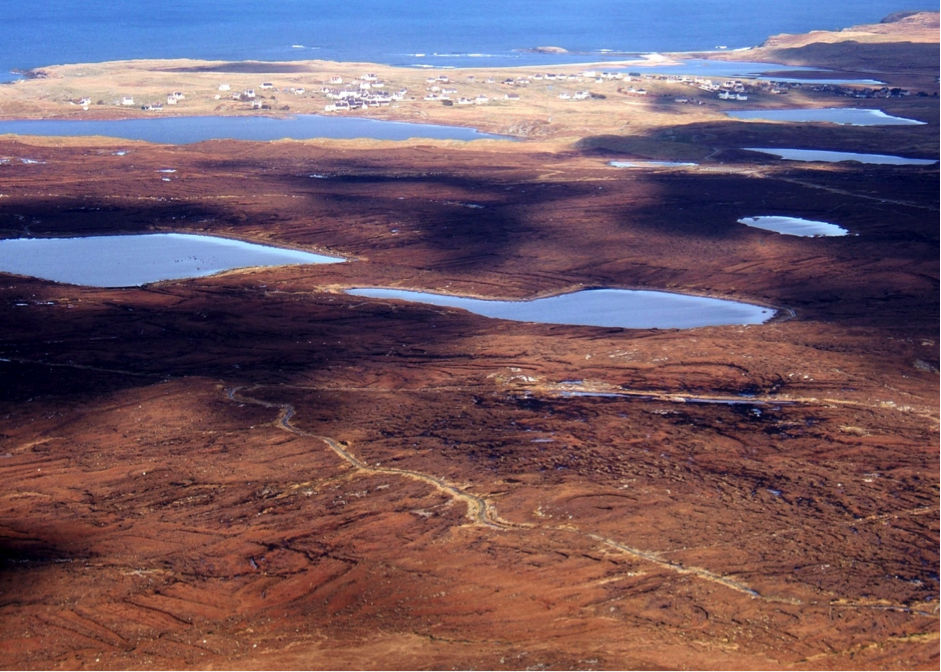
The village of Bragar from Beinn Bragar
In Lewis though, as in many other places the distinction between the wild and the garden or domestic is blurred, there is an intermediary stage where the practice of transhumance farming takes place – utilising what many would see as the wild or wilderness as summer pasture. Here a landscape that is usually the territory of deer and ‘wild’ creatures becomes for a short time the place of humans and their livestock. These areas because of this human interaction are intimately named and enjoyed and perhaps the very act of naming this ‘wild’ land makes it ‘domestic’ or at least an extension of the gàradh.
Another piece of cultivated village ground is the fertile strip of land that lies just behind the beach in Bragar. This is known as machair. The Bragar machair is one of the few still cultivated on the island – the crofters’ crops grow in strips alongside the wild plants such as Meadowsweet, Mugwort and Corn Marigold. The strips are rotated every few years bringing dormant wild plant seeds to life. Seaweed is generally the only fertiliser added to the machair soil, which is a mixture of shell sand and peat.
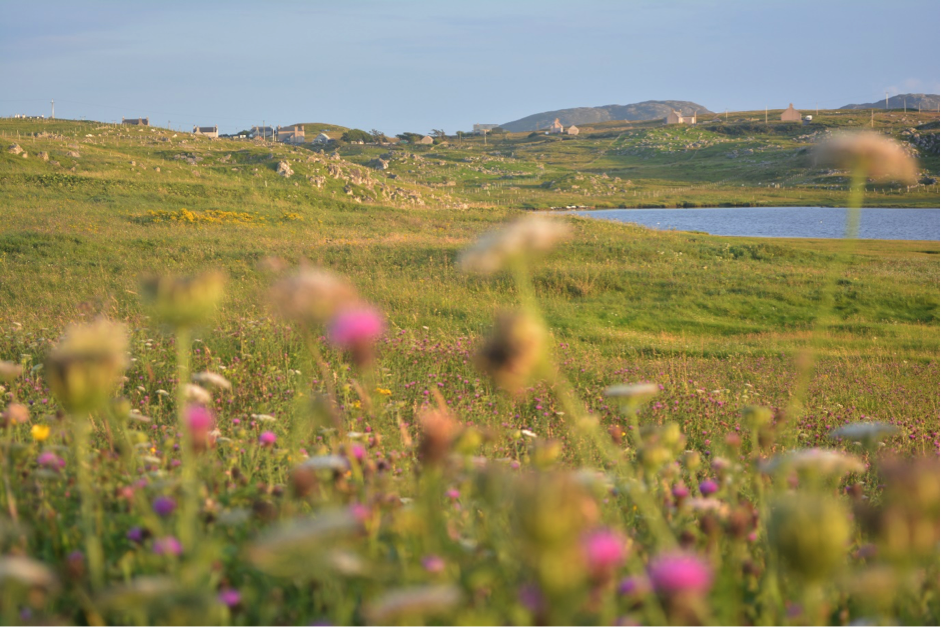 South
Bragar machair
South
Bragar machairMy neighbour is amongst the most active machair ‘gardeners’, creating a structure of tweed bobbins, chicken wire and netting every spring to make his ‘machair garden’, and producing some of the best crops around. The soil where he plants as opposed to where I plant is almost pure sand, machair bàn/white machair. He has a water butt down there that he regularly fills from the nearby ‘allt na soitheachean/the stream of the vessels’.
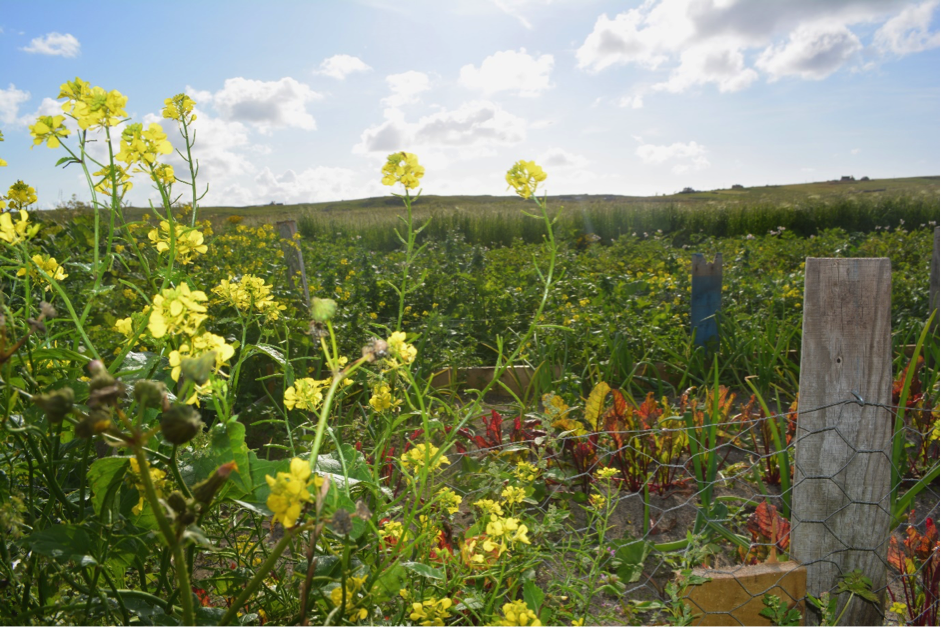
Machair ‘garden’ South Bragar
The machair is always a good place to hang out (especially in spring when the ground smells so good) and to discuss what you are growing this year and to learn more about the best varieties to try such as ‘suil dubh/black seed’ oats or bolthardy beetroots or Hebridean ‘black’ potatoes. It is a symbiotic place where cultivation and a rich bio-diversity of wild plants go hand in hand in a fragile balance that also benefits birds such as the now rare corncrake that migrates from the Congo and Nile delta to keep islanders awake all night with its incessant ‘creaking’ call.
In this time of Covid-19 many here in Lewis are glad to have food security, to have a croft and garden. Some report a resurgence in crofting and I am making a new structure, a polycrub made from upcycled fish farm tubing and polycarbonate sheets to extend the growing season, an idea started by a community group in Shetland. This will become part of what is within my gàradh, my home garden.
Mark Peter Keane (2002). The Art of Setting Stones: & Other Writings from the Japanese Garden. Stone Bridge Press.
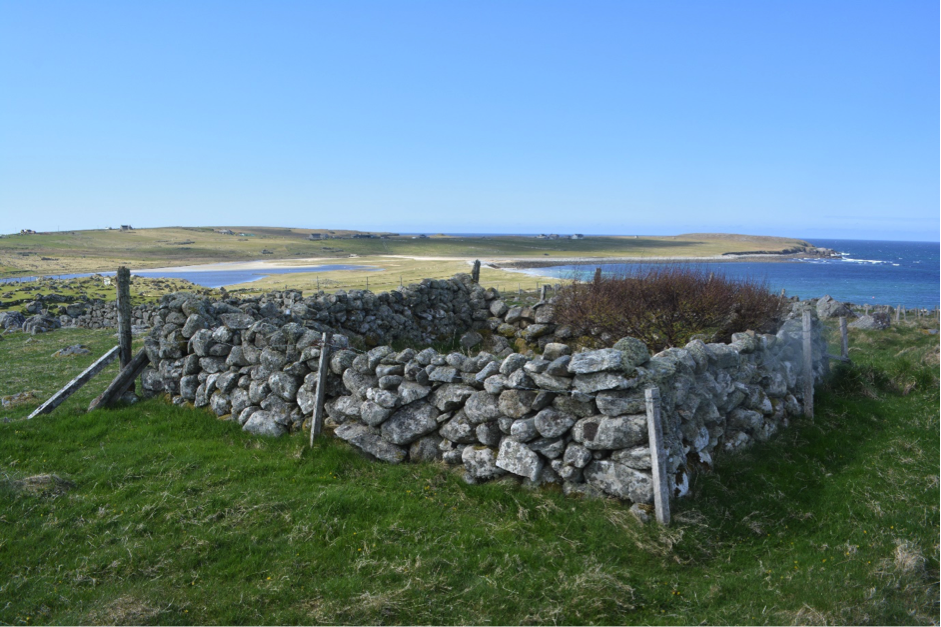
A willow garden in South Bragar – looking towards the machair
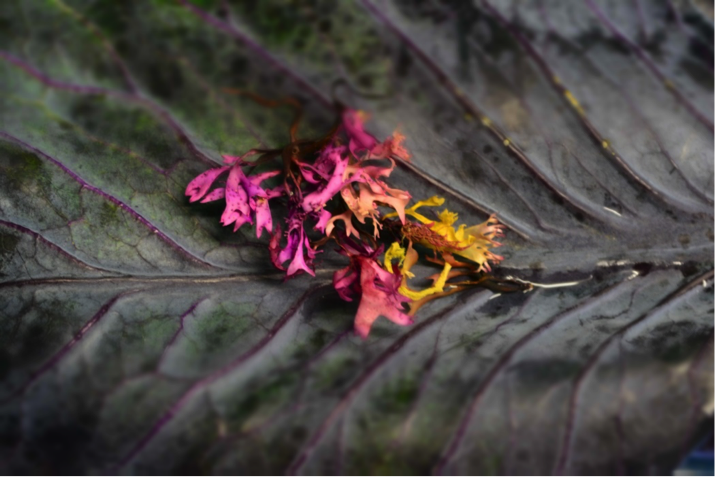
Sun bleached foraged Carrageen and cultivated red cabbage leaf
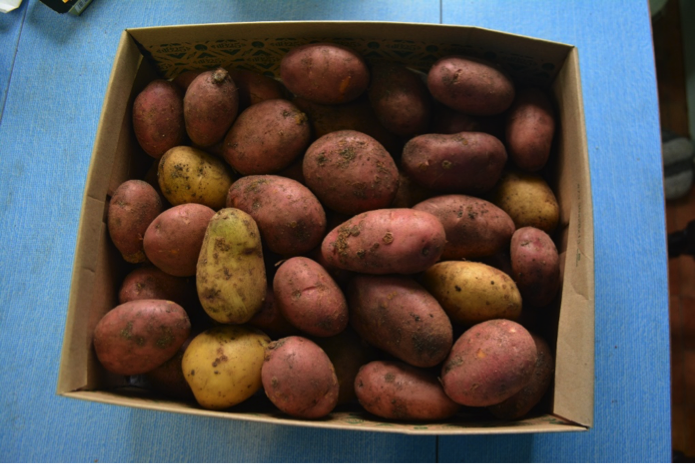 Machair
potatoes
Machair
potatoes 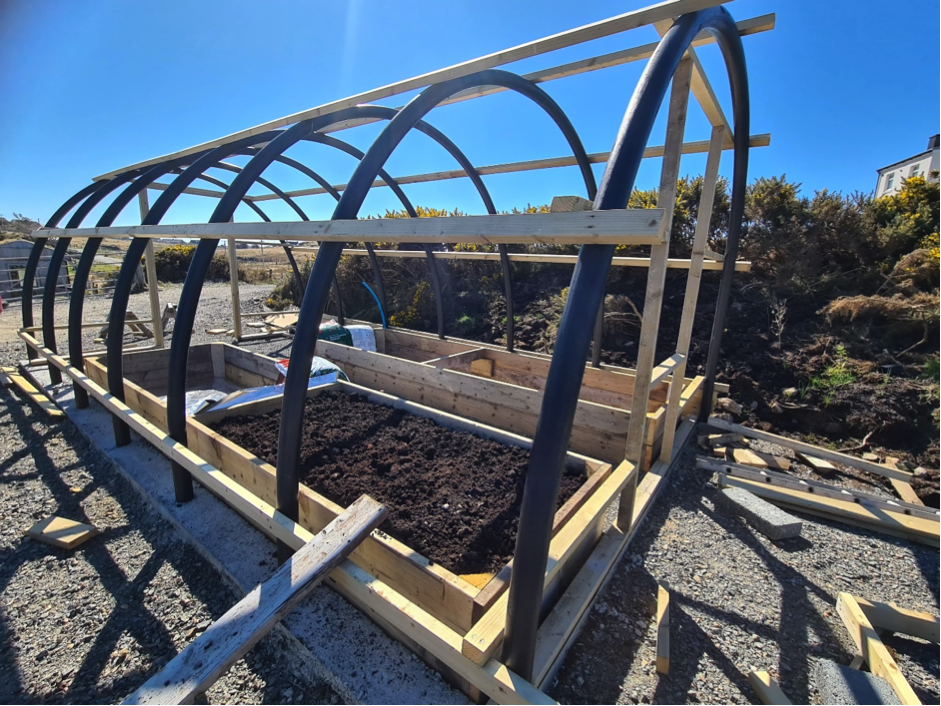 The Polycrub
The Polycrub